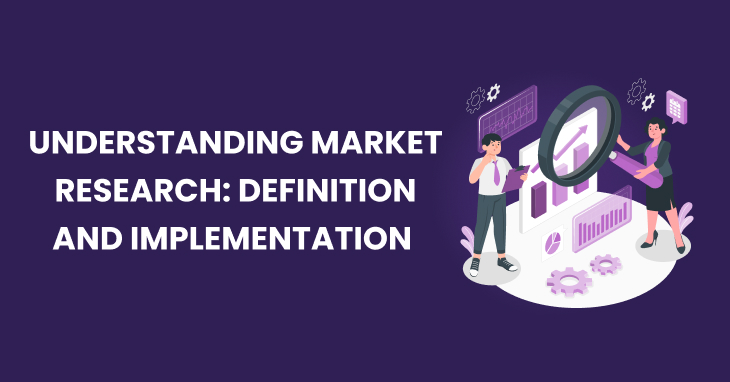I hope you enjoy reading this blog post.
If you want to get more traffic, Contact Us

Click Here - Free 30-Minute Strategy Session
Be quick! FREE spots are almost gone for this Month. Free Quote

Introduction: Setting the Context
Market research serves as a cornerstone for informed decision-making in today’s dynamic business environment. It involves gathering, analysing, and interpreting information about a market, including data on customers’ needs, preferences, and behaviours. Businesses operate in competitive landscapes where consumer demands and industry trends shift rapidly, making it essential to stay informed. Market research provides insight into target demographics, competitors, and market conditions, enabling businesses to adapt and thrive. It bridges the gap between consumer expectations and business offerings. By setting a foundation of data-driven understanding, it empowers businesses to anticipate trends and craft successful strategies.

Click Here – Free 30-Minute Strategy Session
Be quick! FREE spots are almost gone for this Month
Understanding the Core Concept
Market research involves the systematic collection, analysis, and interpretation of data about target markets, consumers, competitors, and industry trends. It equips businesses with actionable insights to make informed decisions and reduce risks. This process primarily focuses on understanding customer needs, behaviours, and preferences.
Key components of market research include:
Primary research: Directly gathering data from sources through surveys, interviews, or focus groups. Secondary research: Analysing existing data from reports, studies, or market statistics.
By integrating these methods, organisations gain a deeper comprehension of market dynamics, enabling them to identify opportunities, optimise strategies, and remain competitive in evolving industries.
Key Benefits and Applications
Market research offers businesses valuable insights to stay competitive and relevant. Its benefits extend across multiple areas:
Understanding customer needs: It identifies consumer behaviours, preferences, and pain points, enabling tailored products and services. Informed decision-making: Research provides data-driven insights that minimise risks in business strategies. Identifying market trends: It uncovers emerging industry trends, keeping companies ahead of competition. Discovering opportunities: It reveals untapped markets and customer segments for expansion. Competitor analysis: Businesses gain knowledge of competitors’ strengths, weaknesses, and market positioning.
Applications include advertising campaigns, product development, pricing strategies, and improving customer satisfaction through precise targeting. It also aids in crafting effective marketing plans that resonate with target audiences.
Challenges and Potential Solutions
Market research often faces obstacles such as limited budgets, time constraints, and data inaccuracy. Small businesses may struggle with the costs of hiring professionals or accessing advanced tools. Lack of time can lead to incomplete analysis, while errors in data collection may result in poor decision-making. Misinterpreting customer feedback is another common issue.
To address these challenges, businesses can:
Leverage cost-effective tools like online surveys and data analytics platforms. Prioritise targeted research to focus on the most critical areas. Partner with research firms for expert insights when in-house expertise is lacking. Train teams to reduce errors in data handling and analysis.
Efficient planning reduces these hurdles significantly.
Practical Examples and Case Studies
Effective market research offers insights that can redefine business strategies. For instance, a food delivery service analysed customer feedback to uncover demands for healthier menu options. Subsequently, they introduced vegan and low-calorie items, increasing sales significantly.
Another example involves a software company conducting competitor analysis to identify gaps in the market. By offering unique features missing in rival products, they secured a stronger market share. Similarly, a retail store used geographic data to optimise their store locations, leading to a 15% growth in foot traffic.
Such cases demonstrate how businesses leverage market research to identify trends, refine offerings, and enhance customer satisfaction.
Future Trends and Innovations
Market research is evolving rapidly with the integration of advanced technologies and data-driven strategies. Emerging tools such as artificial intelligence (AI) and machine learning are enabling businesses to analyse vast datasets with improved speed and accuracy. Predictive analytics, driven by these technologies, allows companies to anticipate consumer behaviour and market trends.
The rise of social listening tools is transforming how brands gauge customer sentiment in real time. Interactive surveys and gamified research experiences are becoming increasingly popular to engage respondents effectively. Furthermore, blockchain technology is enhancing data transparency and security, fostering trust in research processes.
As virtual and augmented reality grow, immersive techniques promise to revolutionise consumer testing and feedback methods.
Conclusion: Final Thoughts and Takeaways
Market research is an essential tool for businesses aiming to succeed in competitive environments. Through exploring customer needs, identifying industry trends, and analysing competitors, companies can make informed decisions that drive growth and innovation. It enables businesses to minimise risks by providing data-based insights and helping identify potential market gaps.
Effective market research fosters better product development, sharper marketing strategies, and stronger customer relationships. It also enhances an organisation’s ability to forecast industry changes and adapt accordingly. By consistently leveraging this process, businesses can position themselves for long-term success in an ever-evolving marketplace.

LEAVE A REPLY